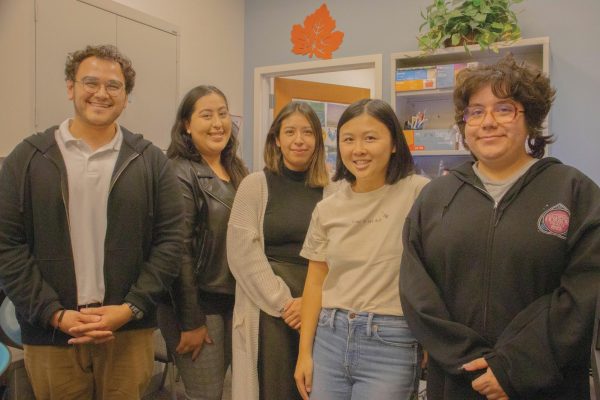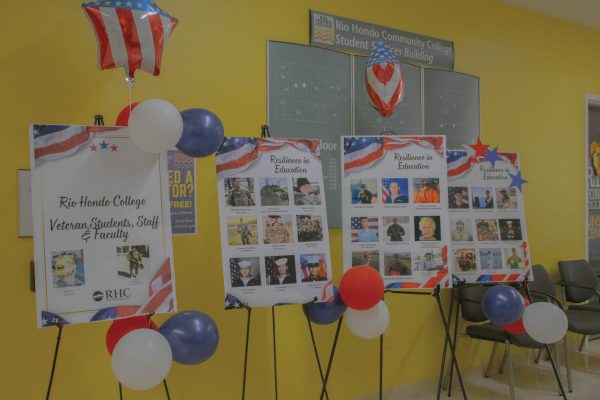Former Rio Hondo student, Board of Trustee member forms task force to steer re-development of America’s largest landfill
Rio Hondo College has formed a task force to represent the college’s interests in the development process of the new regional park being built on the grounds of the former Puente Hills Landfill. The task force is comprised of two faculty members, two administrators, two staff members, and one Trustee. The task force is a project that Gary Mendez, former Roadrunner and current Rio Hondo Trustee, feels very strongly about.
“At the workshops held by the county about the master-plan for the new regional park they discussed who their partners and their neighbors were, and how the park would affect them. They talked about Rose Hills and the Hacienda Heights community, but they left out Rio Hondo College,” said Mendez.
When Mendez identified himself to planners at the meeting and declared that Rio Hondo College should be considered a significant partner, he was told they acknowledge Rio Hondo College a “good” partner. Rose Hills and Hacienda Heights were being addressed because they had requests and concerns that they had voiced about the development. Rio Hondo College wasn’t being discussed because they weren’t a squeaky wheel.
Look at these calves, I can barely pull my jeans up over them. These are Rio Hondo calves.
— Gary Mendez, Trustee Area 4
“I knew we had to hurry, this needs to happen quick,” recalled Mendez. “Rio Hondo College needs to organize, put our thoughts together and communicate a demonstrated vision of how we would like this partnership between the landfill, the Regional Park, and Rio Hondo College to be.”
Mendez quickly generated a 9-point agenda of concerns and ideas regarding cross developmental opportunities for the Regional Park and Rio Hondo College. He then lobbied for a meeting with the county. The county agreed to a meeting, but only gave Mendez a three day notice.
“They told me Oct. 12 that we needed to get the facilities prepared to host them. I went Tuesday and Wednesday to every club I could and gave a speech at each one to try and get students to that meeting. I was recruiting right up until the meeting itself. If I saw three students standing together, I was approaching them,” said Mendez.
Mendez’ grass roots approach paid off. Mendez says there were about 20 students and five each from faculty, staff, and administration. The meeting, which took place in a room at the lower level of the Rio Hondo College Learning Resource Center, had a total attendance of around 40 people, a great many of them arriving with Mendez’ proposals sheet in hand.
The nine points on Mendez’ proposal are:
1. SEA Extension: Rio Hondo SEA (Significant Ecological Area). Link/connect/expand wildlife corridor. Close the gap between the Chino Hills Wild Life corridor and Rio Hondo’s SEA. It would be desirable to Create/designate an official extension of the wild life corridor which would allow animals to travel safely.
2. New Community Courses Opportunity: Rio Hondo Community courses (credit and noncredit). Rio Hondo may provide community courses like health, fitness and environmental courses. Health and fitness courses like walking, hiking and tai chi Environmental courses may be considered like bird watching, flora and fauna, and other courses.
3. Enhance Current Courses: Rio Hondo Environmental Studies. Enhance current program to include new regional park’s gardens, fauna, and trees. Link Rio’s SEA with Regional Park trails to increase educational opportunities for Rio Hondo College students and members of the public.
Physical Education Courses: Walking, hiking, running, yoga in the park, Tai Chi in the park.
4. Link Park trails and walkways to Rio Hondo College: Provide access to Regional Park from Rio Hondo College. Link/create hiking/walking trails.
5. Observatory Access for community courses: Rio Hondo and the Regional Park may create a partnership to provide community access and educational programs related to the observatory. Rio Hondo’s Observatory classes may be offered on a regular basis to the public and educational groups like K-12. Create a small amphitheater for classes with parking.
6. Improve Schabarum Trailhead and Parking: Schabarum Sky trail and trail head improvement. The trail heads current condition warrants improvement and should serve as a hiking/horse access trail to the Regional Park in connection with the Rio Plaza.
7. Rio Plaza Transit Center as an Access Point: Rio Plaza- regional public transportation center may serve as an additional gateway to the Regional Park. As a regional transportation center, Rio Plaza may serve as a regional means to access the park.
8. View from Rio Hondo College: Rio Hondo and Park adjoining border improvements: overlooks, road and foliage. How does the Rio Hondo community desire the upper hill to look like? Trees, shrubs, chaparral, access trails etc.?
9. Rio Hondo Conference Center: Mini Conference Center at very top of West side plateau hill with a near 360 degree view that would be ideal for a conference center to host P.O.S.T Executive programs, Fire programs, and other college related events. Rio Hondo may use this as a laboratory for its new “Hospitality program” transferable to the Cal Poly Pomona program. Rio Hondo may profit from such a venture and add a steady stream of income from a mini conference center.
(These are the nine points taken directly from distributed sheet)
Mendez’ proposals and concerns regarding the Regional Park are created to benefit RHC and its students, as are all of his projects as a Trustee. Two previous projects Mendez spearheaded are Go Rio, which provides free public transportation to full-time RHC students, and Rio Plaza, which is an intermodal regional public transportation center slated to begin construction in 2016. Both projects are aimed at making RHC more accessible and have their roots in Mendez’ own experience getting to and from RHC during his student years.
“I rode the bus, bicycled, walked to school, and bummed a ride when I could,” said Mendez. “”I did everything but ride a horse. I had to walk the hill almost every day. Look at these calves, I can barely pull my jeans up over them. These are Rio Hondo calves.”






